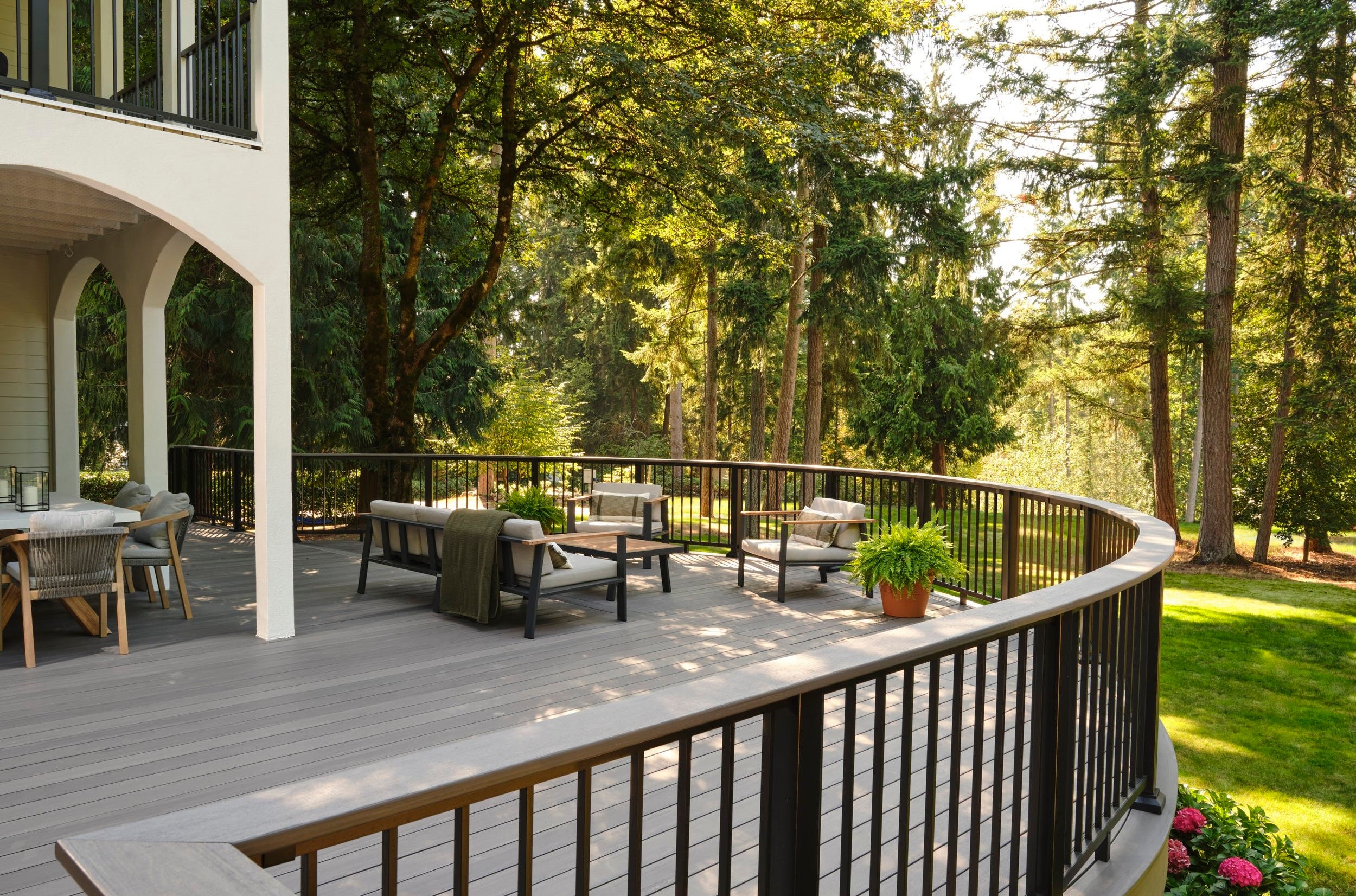

“We sat down with a few of Dunn Lumber’s top decking customers—all deck designers and builders in the Seattle area—to learn how they approach deck projects from start to finish.”
- Jim Coshow
From expanding the footprint of your living space to opening your home up to the beautiful outdoors, decks are a game-changing addition to any home. When choosing your design approach, setting your budget, and selecting decking materials, there are many important aspects to keep in mind to ensure the smoothest process. We sat down with a few of Dunn Lumber’s top decking customers—all deck designers and builders in the Seattle area—to learn how they approach deck projects from start to finish.
Today, we’re joined by Thad Wight, an award-winning deck designer and builder based in the Seattle area. Thad’s company, Wight’s Decking + Design, was established 17 years ago as a landscape and outdoor living space design firm. With a background in landscape design, Thad is passionate about incorporating natural shapes into his outdoor spaces and creating continuity between indoor and outdoor environments. “I quickly fell in love with decks,” Thad says. “It’s an opportunity to fluidly design from interior to exterior.” Taking his passion for outdoor living even further, Thad founded a sister company dedicated to permitting and accessory dwelling units.
How a landscape designer approaches deck design
Thad’s approach to decking is unique. With his background in landscape design and construction, he is heavily influenced by natural shapes. “I think when it comes to construction, there are squared-off ways of doing things,” Thad says. “Houses and structures are engineered like that to be strong. Coming from landscaping, I’m less afraid of natural shapes.” A penchant for unique design inspires Thad to focus on custom builds that utilize synthetic materials, allowing him to execute distinctive lines, like those that earned him the Best Deck Featuring TimberTech Metal Railing award (pictured below). When possible, Thad uses PVC decking boards, which are more pliable since they’re made of high-quality plastic. By heating the boards to a certain temperature, he can create uncommon curved deck edges that complement the surrounding organic shapes.
Mirroring the effortlessness of the natural world, he sees decks as a seamless threshold between interiors and exteriors. Thad first references an aerial view of the home and lot to assess how the deck can be a fluid extension of the interior footprint. “We build decks at the same floor height as the interior floor, so you never have to step down onto a patio,” he explains. He then uses a horizontal view to design for aesthetics, keeping in mind the style of the home in conjunction with railings and features, as well as any other landscape elements the deck can flow alongside.
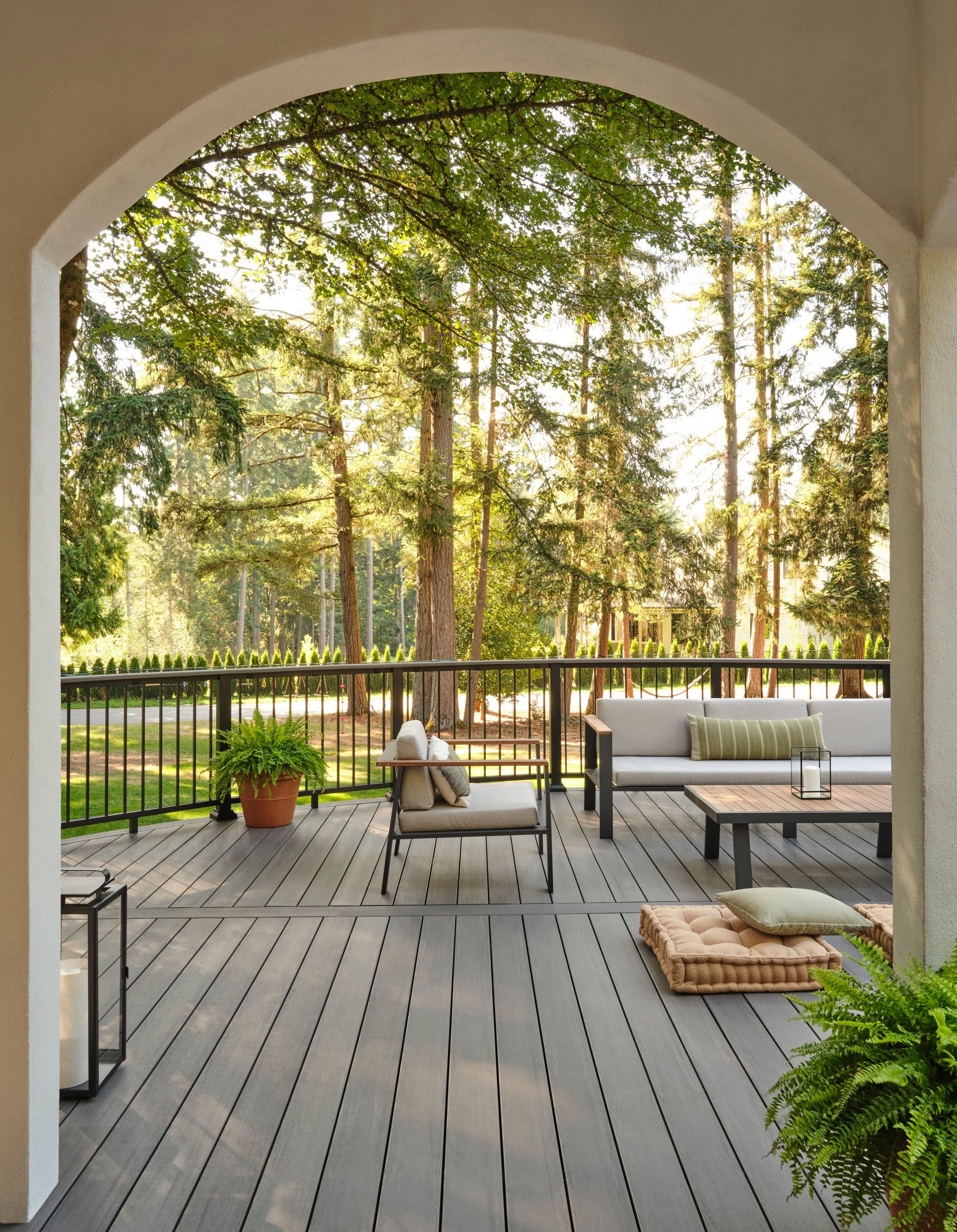

The best Pacific Northwest deck trends? Durability and timelessness.
Thad steers clear of design trends in decking projects. Instead, he specializes in using durable, synthetic materials like PVC boards made of recycled, high-quality plastic, coupled with aluminum railings that are ideal for moist climates like ours. “I really encourage homeowners to go for a timeless look because trends go out of fashion,” he notes, “You’ve got to remember these are long-term projects lasting 20, 30, upwards of 40 years.”
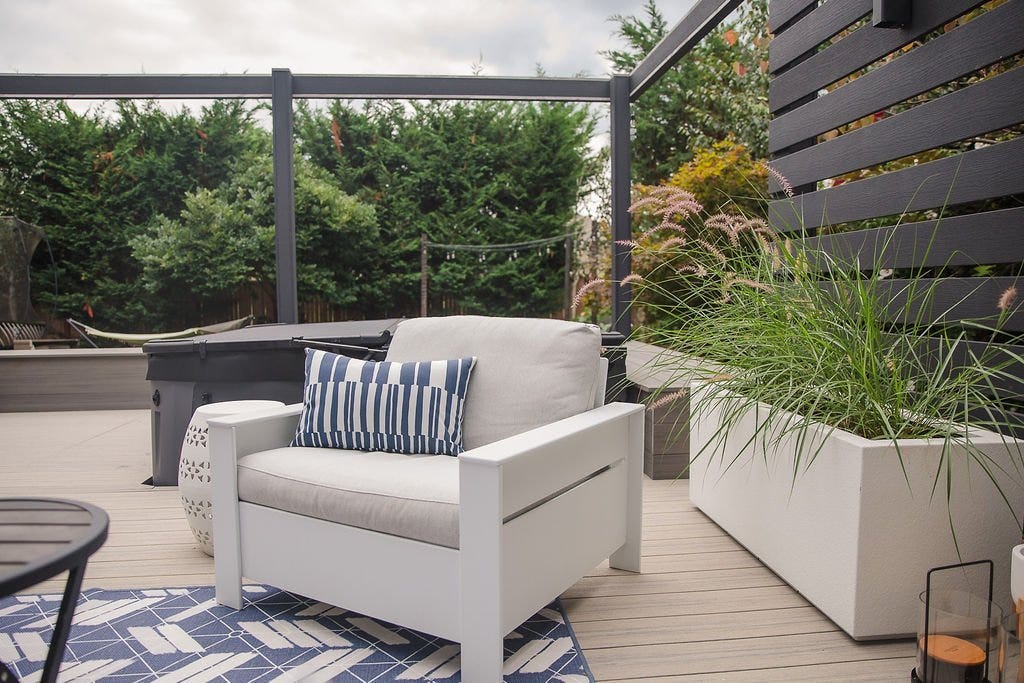

Ideal deck features for the Pacific Northwest
There are endless possibilities when it comes to decking features, but lighting plays a key role in elevating the look and feel of your space. “Lighting is a big one,” he says, “It sets an aesthetic for the space in the evening. It’s also cost-effective, allowing you to improve the enjoyment of the outdoors without blowing your budget.” The benefits of lighting go beyond cosmetics. Lighting also impacts the functionality and code compliance of your deck. Code requires adequate lighting on stairs for safety. If there’s not a house light that can provide enough illumination to the steps, adding deck lighting can easily fix that.
For those with a little more flexibility in their budget, he adds, “Pre-fab or custom-built privacy panels can be a great way to enhance your outdoor space.” When it comes to outdoor living, Pacific Northwest homeowners know all too well the challenges of our wet weather. “Roof structures are amazing for using your deck year-round,” Thad recommends, “And if budget is a concern, pergolas tend to be more cost-effective.”
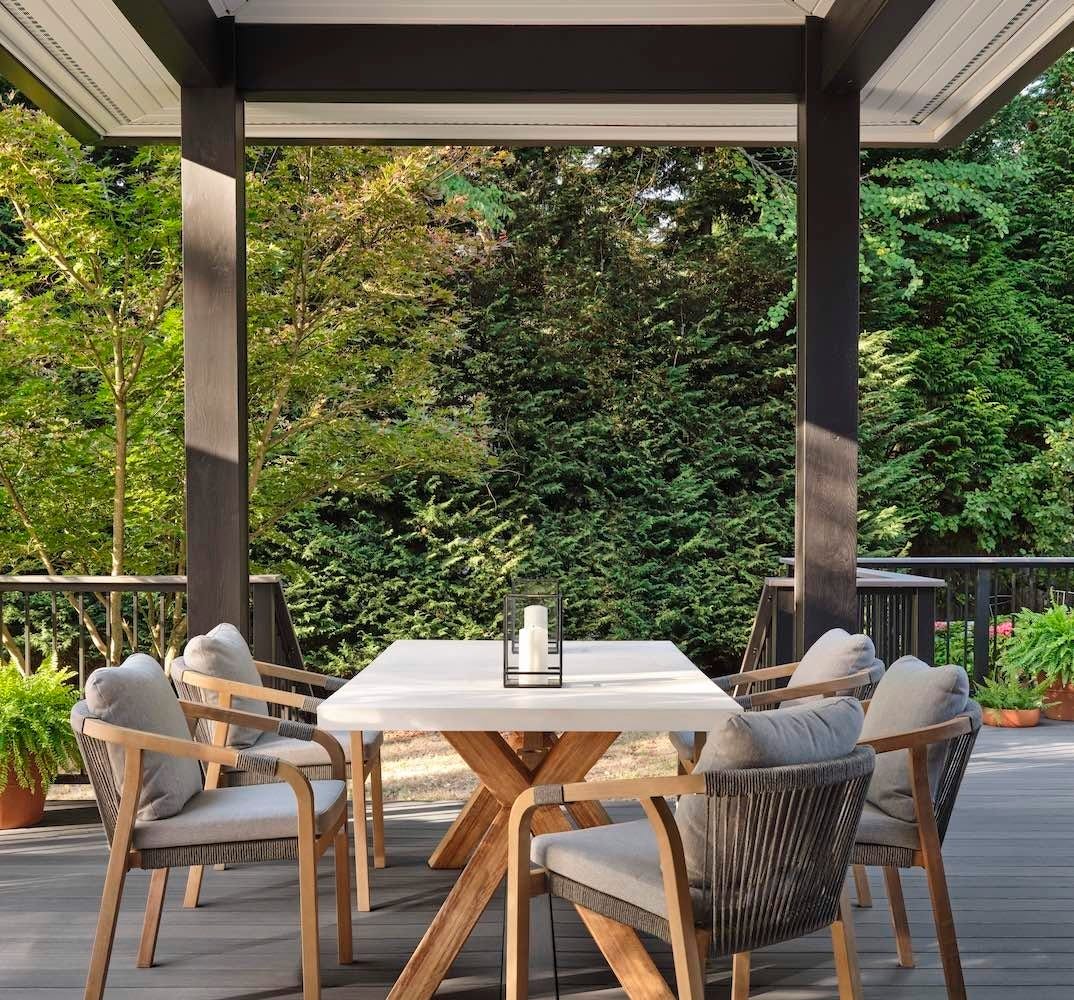

Where to spend and where to save
High-quality decks that stand up to Pacific Northwest weather are an investment. Not only do you want heavy-duty materials that will last for decades to come, but you also want to hire an experienced crew that ensures the integrity of the build. “Quality’s always been the most important element,” Thad says, “So I’ve never gotten bigger than one crew and I don’t think I ever will, just to make sure I’m giving the best quality I can to each of my projects.”
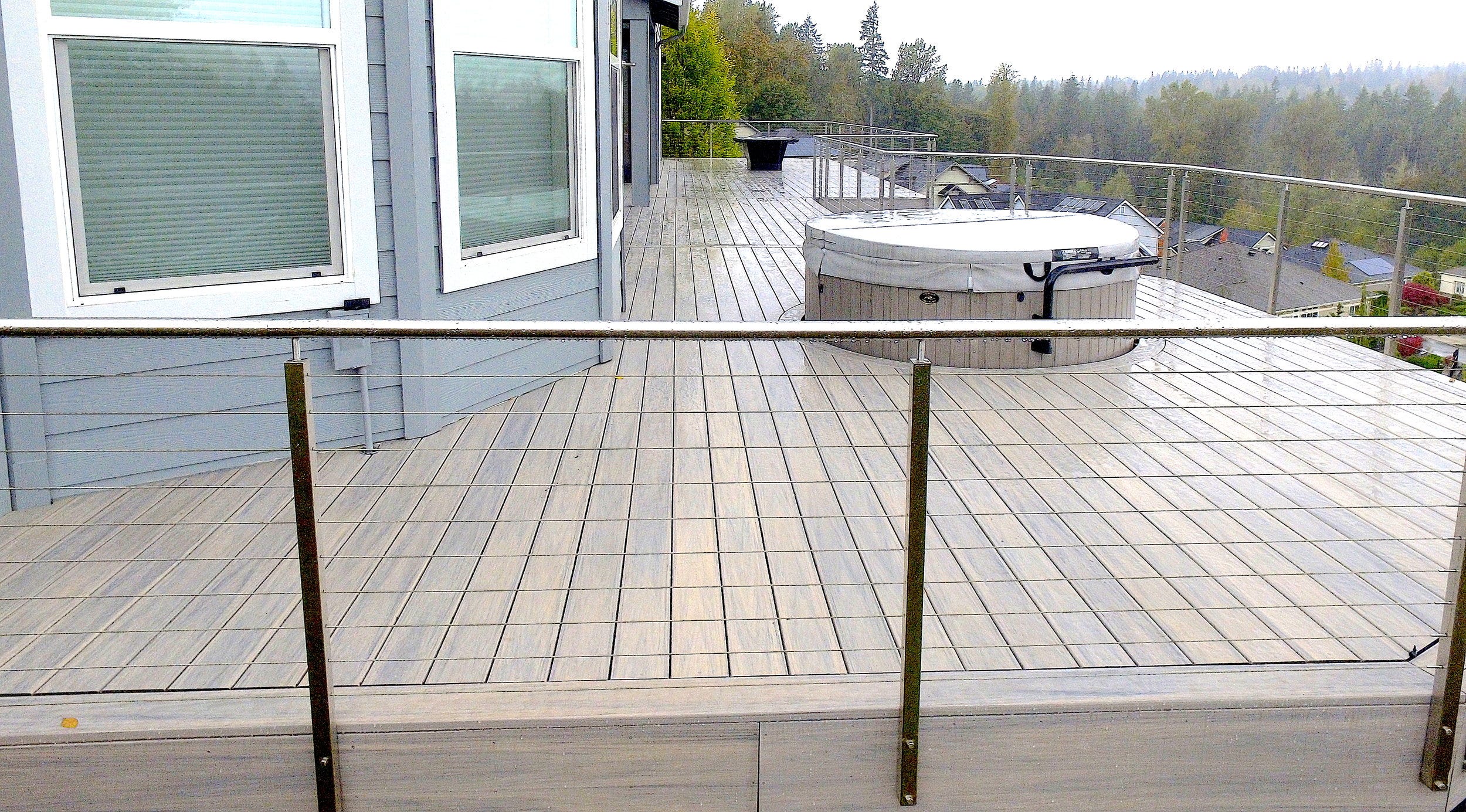

Quality you can feel
It’s essential to ask thoughtful questions in the design process. For Thad, it’s just as important to send clients to showrooms where they can touch and experience materials in person. “I don’t have my own showroom,” he notes, “but I love sending people to Dunn Lumber decking showrooms so they can walk on these surfaces and get an idea of what’s going on so they can whittle down options.”
We hope you’ve found this interview helpful as you embark on your own decking project! There’s a lot to consider, but at Dunn Lumber, we make it easy to access trusted advice, products you can count on, and the knowledge you need to make your project a success. Stay tuned for our next decking specialist interview.





